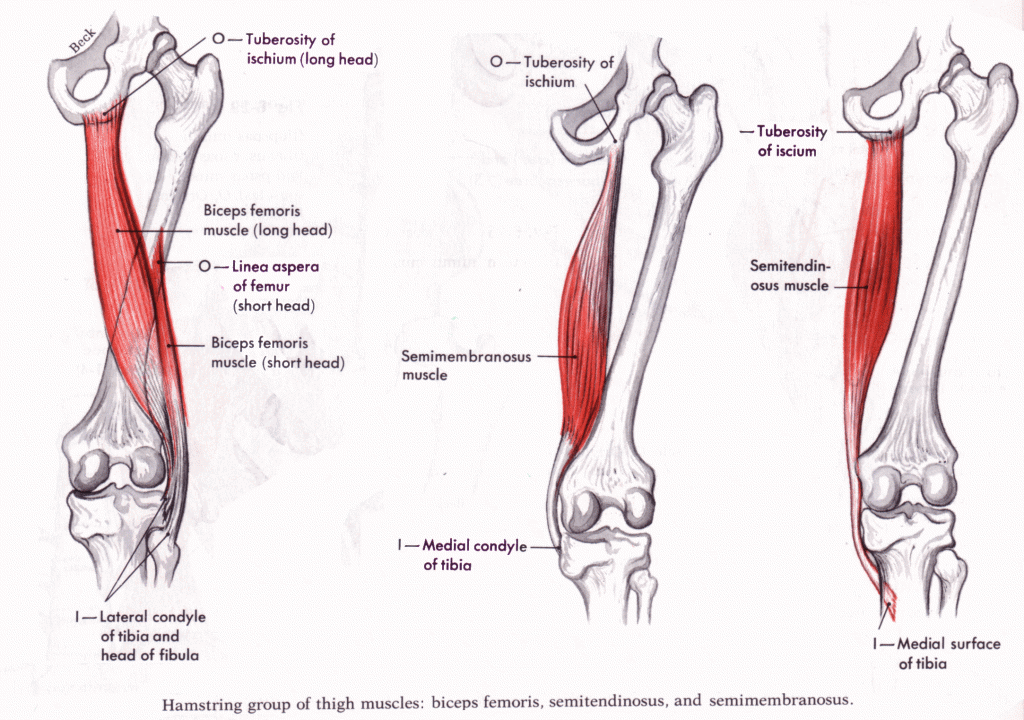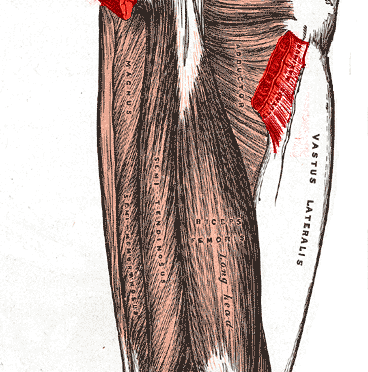Before we get into this post, I want to let you know about our giant How to Squat guide. It covers everything you need to know about every aspect of the squat – from biomechanics to correcting weaknesses to technique. Click here to open it in a new tab so you can check it out after you’ve finished reading this article.
After the huge response I got to my article on the infamous Good Morning Squat, I realized that most peoples’ whole conceptual schema for proper squatting is out of whack. So, I wanted to keep building upon the same concept – a huge squat depends on strong quads, and as a corollary, the hamstrings are vastly overrated as a contributor to a huge squat.
Since there’s research on the subject, I think it’s best to start there. Chris Beardsley has reviewed some relevant research on hamstring activation in the squat, and I’d suggest you take the time to check it out. The basic conclusion is that the hamstrings aren’t activated very well during the squat and that, in fact, the lowly seated hamstring curl achieves about 3x as much hamstring activation as the squat with equally challenging loads.
So, what are we to do with this knowledge?
Some people would say that, naturally, you should try to make the squat more hamstring dominant. The hamstrings are powerful hip extensors, hip extension is important for the squat, and the more musculature you’re activating to a high degree, the more weight you’ll move.
Nope.
I see where that point of view is coming from – advocating the low bar squat with considerable forward-lean to engage the hamstrings more in the squat. But I think its proponents fail to remember one important fact about the hamstrings…
The hamstrings are two-joint muscles.
Originating on the ischial tuberosity and inserting near the top of the tibia, the hamstrings are effective at both knee flexion (i.e. hamstring curls) and hip extension (i.e. RDLs or good mornings). Furthermore, when you flex the muscles, it’s not like it can pick and choose which end it pulls on – without other muscles activating to stabilize the joints, hamstring activation means both hip extension and knee flexion torque.

So, what does that mean for the squat? Referring back to my article write-up about characteristics of elite squatters:
“The three group A lifters (the best squatters in the study) exhibited the largest extensor-dominant (i.e. quadriceps producing more torque at the knee than the hamstrings and gastrocnemius) thigh torques. This is not to be confused with merely having the strongest quads. It means that throughout the movement, the group A lifters’ quads were producing more torque relative to their hamstrings and gastrocnemii, resulting in a higher NET extensor torque.”
In layman’s terms, what all that means is that excessive hamstring activation is actually detrimental to optimum squatting performance (click to tweet this!). The harder your hamstrings are pulling you toward knee flexion, the harder your quads have to contract to produce the SAME amount of net knee extension torque. That’s the exact opposite of what you should be shooting for!
Context:
As a powerlifter, I’m primarily concerned about lifting the most weight possible. I’m assuming that applies to many of you also. If so, purposefully aiming for high hamstrings involvement in the squat is counterproductive. Plain and simple.
I can somewhat understand the inclination to teach a more posterior-dominant squat to new lifters, especially if they’re using one of the many typical beginner routines which include high frequency, fairly high volume squatting with very little deadlifting or hamstring accessory work.
However, if that describes you, be warned: you are forming a bad habit you’ll have to break later! I personally think you should instead squat in a more efficient manner (either high or low bar, trying to maintain a more upright torso and prioritizing quad involvement), while also doing some accessory work for your hamstrings such as GHRs, hamstring curls, or RDLs since, like we’ve already established, the squat is NOT a good hamstring builder anyways!
Now, just to preempt a question I know will pop up – I am NOT saying you shouldn’t train your hamstrings. Strong hamstrings mean a big deadlift, healthy knees, and a potentially lower risk of hamstring tears. Just don’t use the squat to train your hamstrings. Use hamstrings exercises to train your hamstrings.
Also, just so we’re clear, I’m not saying hip extension isn’t also important for the squat. It’s just that it doesn’t need to be coming from your hamstrings. Prioritizing glute activation is a much better route, since the gluteus maximus is a one joint muscle – only producing hip extension without accompanying knee flexion torque as with the hamstrings. The good news: (based on my understanding, at least) range of motion is the primary determinant of glute activation during the squat, so as long as you’re squatting deep, your bases are covered there!
Putting it all together:
If you want to get a massive squat you should train your quads, try to minimize forward lean, and not concern yourself with hamstrings involvement when squatting. Squat for a huge squat, and pull or do direct hamstring work to turn you hamstrings into pork cords. Purposefully trying to increase hamstring involvement in the squat is an exercise in futility if your goal is to move more weight and get stronger.
Share this article with your misguided friends who preach “posterior chain” and then wonder why their squat is stalled. When they see the light, they’ll love you for it.




